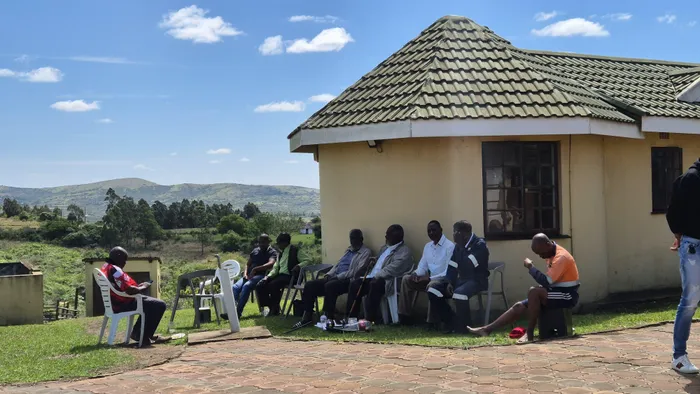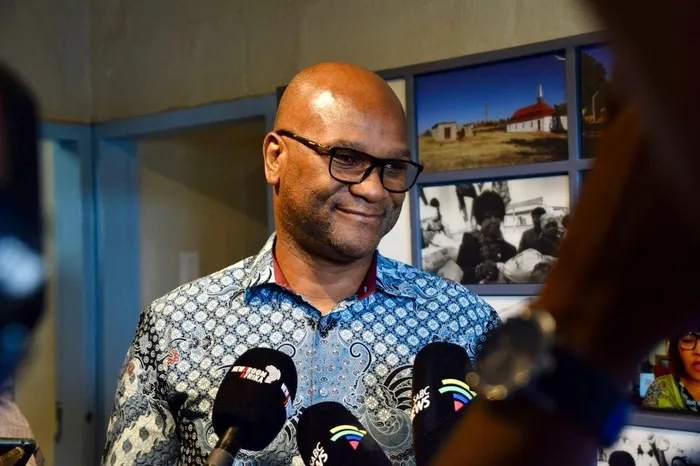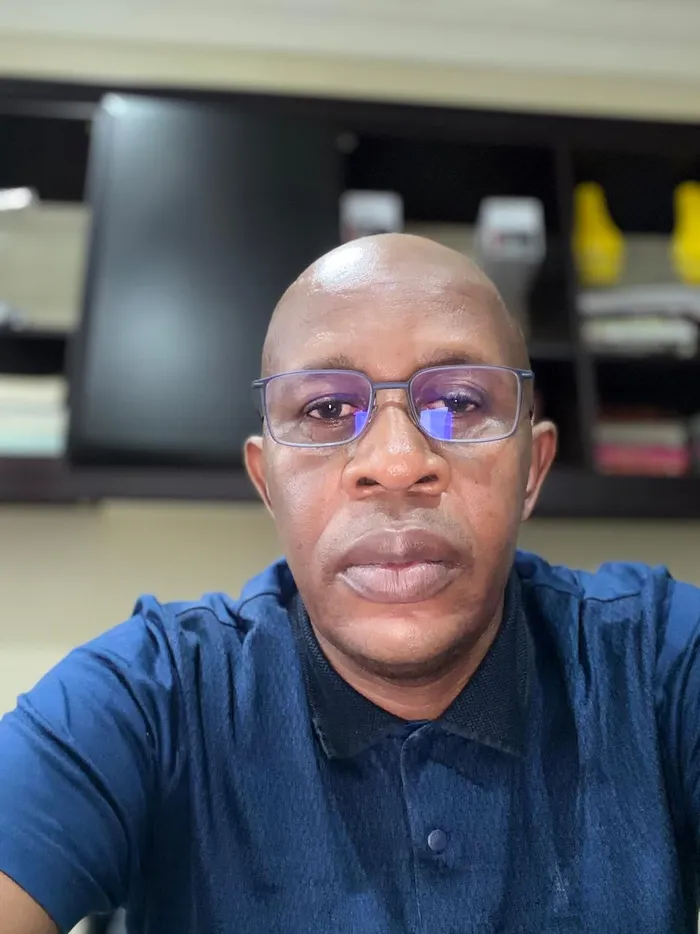The revolutionary legacy of Nathi Mthethwa: a cadre of the highest order

NEIGHBOURS of the Mthethwas in KwaMbonambi, eMpangeni, visiting the Mthethwas to offer their condolences on the passing of Nathi Mthethwa, South Africa's ambassafor to France who died in Paris last week in an apparent suicide.
Image: SIBONELO NGCOBO Independent Media

THE late ambassador Nathi Mthethwa, who died after falling from the 22nd floor of the Hyatt Regency hotel in Paris last week. He will be laid to rest on Sunday in a special official funeral category 2.
Image: JAMES MATHIBENG

NKOSINATHI MPUNGOSE
Image: Supplied
Those of us who have traversed the arduous path of struggle for many difficult years recall with great admiration the calm vision of many departed stalwarts of the party, who, even when condemned by bell, book and candle, refused to forsake their posts and to shirk their responsibilities. - Oliver Tambo.
The words of Tambo echo this historic moment in our revolution as we render one final salute to comrade Nathi Mthethwa. To let them settle fully, let us start at the beginning.History doesn’t hinge on figures no matter how talented, far‑seeing or charismatic they may be. What our movement teaches is that the bulk of momentum comes from impersonal forces – the clash of classes, the contradictions woven into society and the collective will of the masses. Still, when the right conditions line up, the so‑called "subjective factor"—the conscious intervention of individuals—can become the spark.
Not everyone who leaves a mark on history is great. True greatness belongs only to those whose deeds advance the cause of social progress, who accelerate the victory of the new, and who ease the birth pains of transformation. These individuals aren't moulded in a vacuum; they emerge from the furnace of class struggle, from the efforts of the oppressed and in response to the epoch’s historic tasks.
Each class accordingly spawns its leaders, each tuned to the mission that defines that class. What this translates to for the working class is a blend of revolutionary resolve, crystal‑clear theoretical insight, intimate ties to the masses and a two‑way street of teaching and learning from them. Heroes come forward when they answer the rallying cry of struggle at moments when history demands answers. Our task is to untangle the relationship between the individual as the subjective catalyst and the sweeping objective forces that drive society’s movement and to situate that role within its proper historical context.
Within that backdrop Mthethwa emerges not merely as a participant in events but as a deliberate architect of history itself. In our era, embedded in our movement and on the front‑line trenches, he set an example of such distinction that today’s activists would do well to emulate. To give purpose to the life of Nathi as I have come to know it, I would like to use the political era of the 1990s as a canvas on which to display his extraordinary deeds.
A product of the 1990s revolution
The early 1990s in South Africa were not a bridge to change; they were a seismic volcanic upheaval. The rhythm of the struggle surged to a fevered pitch, powered by decades of resistance, mass mobilisations and armed skirmishes. Though bruised, the apartheid regime remained ferociously entrenched, refusing to yield. Its security apparatus turned up the pressure, dispensing targeted assassinations, mass detentions and a relentless wave of warfare. The violence the state wielded was not merely physical; it was an onslaught that saturated public conversation with racist vitriol and fear‑mongering.
Across the African continent, the winds of liberation were blowing. The Battle of Cuito Cuanavale (1987–1988) had decisively shifted the regional balance of power, forcing the apartheid regime to retreat from Angola and paving the way for Namibian independence in 1990. These victories reverberated across the continent, emboldening liberation movements and exposing the vulnerability of white minority rule.
Globally, the collapse of the Soviet Union and the shifting dynamics of Cold War alliances created both uncertainty and opportunity. While imperialist forces sought to reshape Africa through neoliberal restructuring, revolutionary movements saw a chance to consolidate gains and intensify the offensive. The ANC’s underground structures, long sustained by MK operatives and clandestine networks, began surfacing to reconstitute legal formations. The tempo of the armed struggle, though tactically restrained, remained ideologically potent, and its legacy infused every mobilisation, every slogan, every march.
Guided by COSATU, the trade union movement had swelled into a bloc stitching together shop‑floor battles with the broader fight for national liberation. Meanwhile the youth movement, fuelled by its formations, radiated militancy, razor‑sharp ideology and a deep embedment in community life. The United Democratic Front (UDF) had sown an activist seed that germinated within youth circles, trade‑union ranks and civic structures.
While Inkatha draped itself in the mantle of narrow nationalism, it functioned essentially as a counter‑revolutionary force. Its tacit cooperation with the apartheid security apparatus gave rise to massacres, sowed instability and singled out activists aligned with the ANC. In KwaZulu‑Natal this boiled down to a string of savage episodes that now stand as an illustration of that turbulent period. These events were not isolated, but they were part of a systematic campaign to destabilise the liberation movement in KwaZulu-Natal. Yet, they also catalysed the rise of disciplined youth formations, political education cells, and underground coordination.It was in this crucible that the ANC’s internal structures were reborn.
Conferences were not mere administrative exercises, but they were battlegrounds of ideas, sites of cadre development, and moments of ideological clarity. The masses were not passive; they were ready. Ready to unleash an offensive, ready to insurrect, ready to reclaim their future. It was during this period of revolutionary ferment that I first met Mthethwa, during a pivotal moment for our movement.
It was a time when SA Youth Congress (SAYCO) was officially established. A culmination of the push to fold youth bodies such as the KwaMashu Youth League and the Magabheni Youth League into one unified SAYCO umbrella. As an activist within the KwaMashu Youth League, I served on both the area committee at the local level and as part of the coordinating structure for KwaMashu. Like other youth‑league branches, we gathered for an elective conference of SAYCO and set up a new leadership team.
At that time we could feel the winds of change sweeping across the country, driven by the growing momentum of the liberation struggle and shifting dynamics.In the throes of that era, to be precise in 1990, I found myself at a conference charged with electing Southern Natal’s youth leadership. The leadership that emerged from that gathering included notable comrades such as Mzwandile Mhlanzi, Cyril Xaba, Nathi Mthethwa (Secretary), Nathi Mpungose, Jenny Irish-Qhoboshiyane, Skhumbuzo Ndlovu, Malusi Gigaba and Andile Khoza, as well as the late comrades Kenny Mtshali, Theo Cwele-Scott and Dumsani Bhengu.
Mthethwa was one of the four comrades who kept the office running full‑time, earning a stipend of about R1500. During that period, I was privileged to interact with him every day. Charting his personality in detail feels like chasing a moving target, but if I must condense it, I would argue that Comrade Nathi Mthethwa was the incarnation of Che Guevara’s cadre archetype – far beyond a simple militant, he acted as a moral vanguard, a disciplined servant of the masses and a living merger of theory and practice. He had reached a seasoned maturity that equipped him to radiate revolutionary fervour and exacting discipline, consistently setting the bar by his own conduct.
Nathi epitomised that profile. Ambition never tugged at his sleeves; conviction alone set his course. What some would dismiss as softness – his empathy – was, in fact, a tenderness capable of stitching together comrades amid the mud‑splattered trenches. His discipline was no routine; it was an ideological rigour hammered into shape within the furnace of relentless struggle. He recognised that a genuine revolution could not survive on slogans; it required a sturdy scaffolding, nor could it be sustained by passion alone; it demanded a razor‑sharp precision.
He was a cadre who internalised the mass line. He tuned into the voices of the people and wove their experiences into a political awareness. He treated meeting minutes as lenses that sharpened insight, not as red tape. He saw criticism as a lever for growth, not as a threat to the ego. He regarded leadership as an act of service, not a badge of status.
Mirroring Che’s vision of the cadre, Nathi was a man who could sacrifice immensely while shunning any lure of personal profit. When his formal position was stripped away, he slipped back into his branch, not as a retreat but as a renewed pledge. From the grassroots he rebuilt, proving that revolutionary character is judged not by titles, but by the tenacity with which one persists.He was a political educator, a strategist, and a moral compass. He deflected factionalism with charm, absorbed setbacks with grace, and never allowed personal grievance to eclipse collective purpose. His charisma was not theatrical but principled. His humility was not performative, but it was militant.
Nathi was a cadre made of rare material, a cadre of the highest order, ideologically mature, morally grounded, politically disciplined, emotionally intelligent and fiercely loyal to the people.He was the very sort Che Guevara had in mind when he wrote, "Above all the cadre must be a man or woman of integrity, someone who inspires trust, who is incorruptible and who lives the revolution in every act.”
Nathi poured the revolution into each of his actions, and by doing so he became more than a comrade; he turned into a compass.
The Ideological Grounding of Youth Militancy
Serving with comrade Nathi in the collective, we were that youth described by the documents circulated in the ANC’s 1985 Kabwe Conference, which articulated a very profound and progressive perspective on the role and place of youth in the national liberation struggle, which, amongst other things, described the youth as “as enthusiastic in its search for knowledge as it is militant in the fight for the realisation of the ideals it holds dear. Having evolved an understanding of the 'right and the wrong', it displays great zeal and verve in fighting for what it conceives as just. Within the different class formations, it acts as a powerful driving force, a dynamo of the class, national and international battles. It is to be found in the front trenches of practical and theoretical struggles, displaying both initiative and self-sacrifice.”
We could relate with this from our own practical experiences in the township faced with amabutho (Zulu warrior groups) and in universities faced with the contending reactionary student formations.
This document also said that due to their inexperience and illusions bred from their psychological make-up, young people can be easily swayed into positions that are counter to their interests. Thus, a young worker could seek false comfort by abstaining from class battles or even by joining the exploiter's state machinery. Not seldom, young people are enticed en masse to adopt social and cultural value systems alien to their interests.
With comrade Nathi at the helm, we were part of the revolutionary contingent described in the 1989 SACP document, Path to Power, which included the world socialist system, the national liberation movements and anti-imperialist forces in developing countries, and the working-class movement in developed capitalist countries.
The South African national liberation struggle was a synthesis of these forces. It combined youth, women, students, civic organisations, and trade unions into a single revolutionary front. The demands for national democracy united black workers, rural masses, intelligentsia, cultural workers, youth, women, religious communities, and even sections of white workers and farmers.
Comrade Nathi understood that the system of national oppression and capitalist exploitation blocked the aspirations of youth. He saw the lack of employment, education, and cultural facilities not as policy failures but as structural violence. He helped channel youth militancy into strategic direction, giving theoretical depth to their courage.
In the course of our day‑to‑day encounters, Nathi consistently showed empathy. He had a gift for listening closely, and whenever he caught even a flicker of anger in someone else, he would meet it with a warm smile that seemed to dissolve the tension, replacing it with quiet kindness.
He had a keen eye for detail, which he demonstrated through the meticulous preparation of meeting minutes. When working on these documents, he would often lock himself in the office, signalling to us that interruptions were not welcome. His relentless drive to perfect the art of writing soon became one of his signature traits. When his “learnt comrades” flagged occasional grammatical slip‑ups, we took those remarks to heart, treating them as constructive feedback.
This environment fostered a culture of learning within the organisation, allowing Nathi to grow into one of the most articulate advocates for our struggle, a political educator, and a strategist.I recall a significant moment during a policy conference leading up to the 2017 Nasrec Conference. Nathi made a crucial intervention in a heated debate regarding Radical Economic Transformation and the role of “White Monopoly Capital”, and there was a debate about the concept of “White Monopoly Capital”.
He highlighted that the essence of the discussion was the distinction between form and content, pointing out that the NGC was mistakenly conflating the two. While he did not take a definitive stance in that debate, he helped illuminate the underlying issues at play. This example illustrates the depth of his analytical growth, enabling him to identify the core differences in perspectives, where one side emphasised content and the other focused on form.
Nathi possessed a natural charisma that allowed him to navigate diverse challenges with grace. He had mastered the art of deflecting criticism with a charming laugh, a quality that many who knew him would attest to. One of his most admirable traits was how he never personalised the challenges that arose from changes in leadership, which often intruded on personal lives. When he accepted that he was no longer the national organiser of the youth league, an acknowledgement that deprived him of a regular income, he faced this transition with dignity.
Rather than casting blame on others, he understood that his contributions to the organisation were rooted. Nathi took all his best qualities with him in all his deployments, whether as an NEC member, a political education officer, a minister of sports, arts and culture or a minister of police. All these are heavy responsibilities which he took with pride and humility. Even when criticised as an individual for a collective decision, he never betrayed the movement nor succumbed under pressure; he refused to forsake his post nor to shirk his responsibilities.
He remained ANC, loyal to the core, and never changed his principles to suit factional power struggles. Even when attacked and having to fight back, he did so with tenacity and discipline. He was a serious and principled revolutionary, not merely a tactician.We are picking up the spear from comrade Nyambose (Mthethwa clan name) with a resolve to once again reclaim our movement and declare that the National Democratic Revolution is not a slogan; it is a living process. It is the dialectical unfolding of history through the conscious action of the oppressed, guided by scientific theory and anchored in mass mobilisation. It is the bridge between the present and the possible, between inherited injustice and liberated futures.
And it demands of us not comfort, but commitment.We must reject the illusion that transformation can be outsourced to policy alone. The revolution is not a technocratic exercise; it is a battlefield of ideas, institutions, and class interests. It requires revolutionary clarity, not rhetorical convenience. It demands cadres who are not merely administrators but architects of new social relations. It calls for leaders who do not manage contradictions but resolve them in favour of the working class and the poor. He understood this.
He did not treat the organisation as a career ladder but as a school of struggle. He did not speak to impress; he spoke to clarify. He did not lead to dominate; he led to serve. His life reminds us that the revolution is not won in conference halls alone, but in the trenches of ideological contestation, in the discipline of daily organising, and in the humility of learning from the masses.
Let us be clear that the NDR must be defended from dilution, distortion, and drift. The NDR must be reclaimed, not as a slogan of convenience, but as a programme of structural rupture. The youth must be rearmed not with slogans, but with theory, discipline, and revolutionary daring. The working class must be reorganised not as a voting bloc but as the leading force of transformation. The organisation must be rebuilt not as a machine of patronage, but as a movement of conscience.
To honour comrade Nathi, let the branches become battlegrounds of consciousness.Let the revolution breathe again, not as nostalgia, but as necessity.
(Mpungose is the ANC Youth League's former secretary for administration in Southern Natal Region. His views don't necessarily reflect those of the Sunday Tribune or IOL)
SUNDAY TRIBUNE